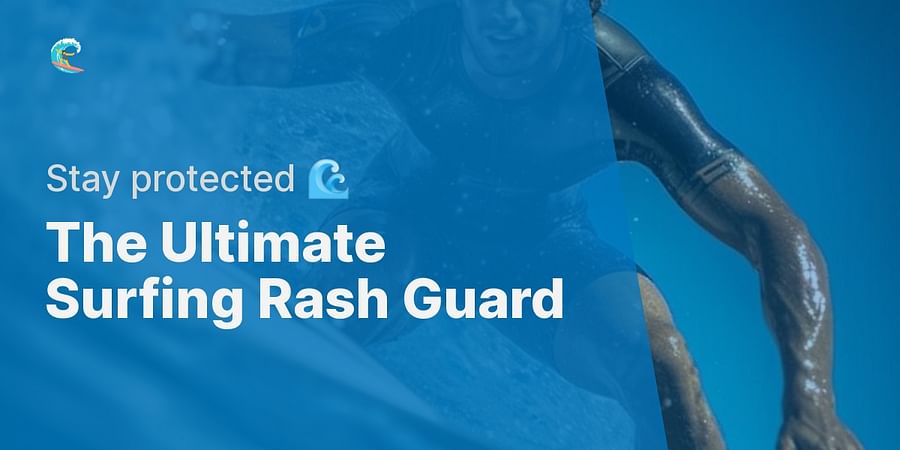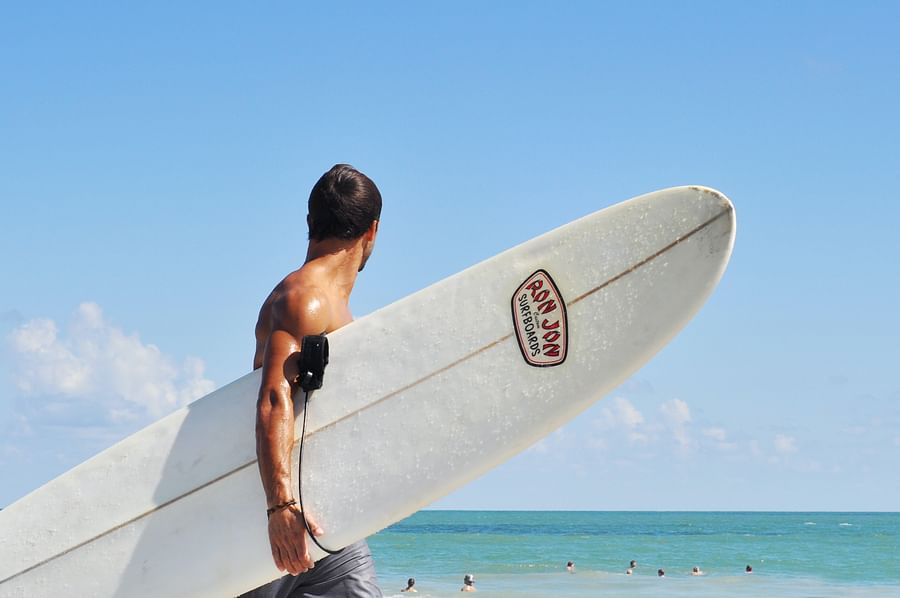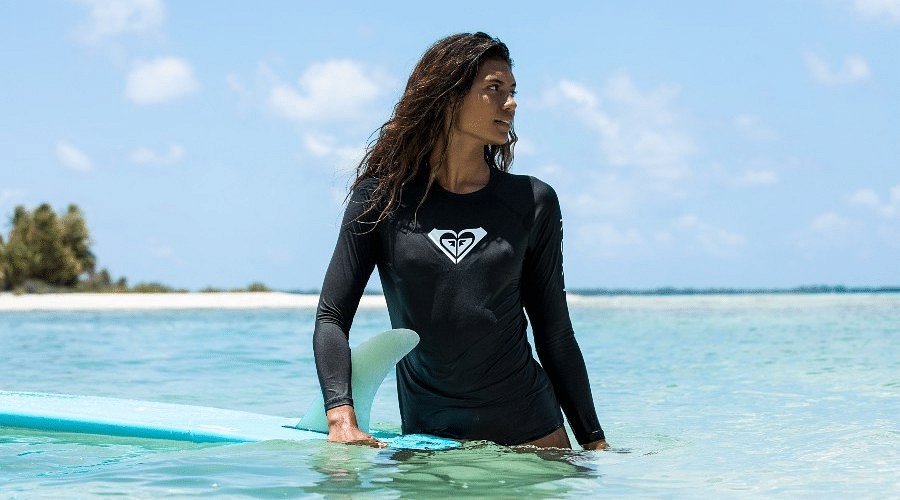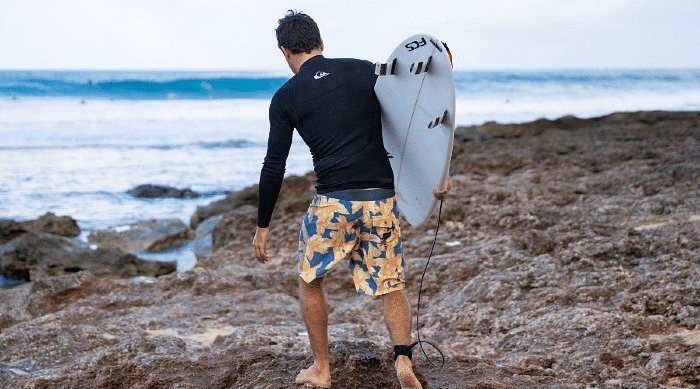Essential Surfing Rash Guard Buying Guide: What You Need to Know

Imagine this: You're riding the perfect wave, feeling the salty spray on your face, the sun kissing your skin.
But wait, what's that itching sensation? Ouch! That's a nasty rash, my friend.
Welcome to the world of surfing, where the thrill of the ride sometimes comes with discomfort.
Luckily, we've got your back (literally) with the best surfing rash guards.
Yes, a rash guard, your trusted companion in the water, is more than just a fashion statement.
It's an essential surfing gear that protects your skin from the harsh elements.
Whether you're a seasoned surfer or a beginner just learning to surf, this surfing rash guard guide is for you.
So, are you ready to find the perfect rash guard for surfing?
Let's dive into rash guard selection tips, features, benefits, and top surfing rash guard brands.

So, what exactly are surfing rash guards and why are they considered essential surfing gear? Picture this: you're out on your board, riding the waves, feeling the salt spray on your face, when suddenly, your skin starts to chafe from the constant friction with your board. Not so fun anymore, right? That's where a rash guard comes in handy.
A rash guard is a type of athletic shirt made of spandex, nylon, or polyester that protects your skin from the harshness of the surfboard's surface, the sun's harmful UV rays, and even the occasional jellyfish sting. It's a crucial piece of gear that keeps you comfortable and protected while you're out there conquering the waves.
Whether you're a seasoned pro or a newbie still finding your balance, the best surfing rash guards are an investment in comfort and safety. So, how do you choose the right one? Let's dive into the surf rash guard guide. Here's a refresher on other surfing gear essentials you might need.

Regarding the fabric of the best surfing rash guards, there are several options, each with unique benefits and drawbacks. For instance, Lycra and spandex are popular choices due to their stretchability and quick-drying properties, but they can be less durable than other materials. On the other hand, polyester blends offer excellent durability and UV protection, yet they may not be as comfortable or breathable.
Then there's neoprene, a material praised for its superior warmth and flexibility, especially in colder water. However, it's heavier and may restrict movement compared to Lycra or polyester.
So, how do you decide?
Think about your surfing conditions and personal comfort preferences. What feels best against your skin when you're riding the waves?
Remember, no matter the material, all rash guards offer protection against the sun and surf rash, but the degree varies. So, always check the specifics when making your impulsive guard selection. Choosing your surfing shoes is all about finding the right balance between comfort, protection, and durability.
Now that we've discussed the different materials used in rash guards let's examine their pros and cons. This will help you decide when to choose the right rash guard.
| Material | Advantages | Disadvantages |
|---|---|---|
| Polyester | Durable, lightweight, and quick-drying. Offers excellent UV protection. | It is not as soft or stretchy as other materials. It May cause skin irritation in sensitive individuals. |
| Nylon | Soft, stretchy, and comfortable. Resistant to abrasion and UV rays. | Not as durable as polyester. It may lose shape over time. |
| Spandex (Lycra) | Highly stretchy and form-fitting. Provides excellent mobility. | It's not as durable. Requires careful washing to maintain elasticity. |
| Neoprene | Provides insulation in cold water. Durable and buoyant. | Not breathable. It may cause overheating in warm conditions. |
| Polyester-Spandex Blend | Combines the durability of polyester with the stretchiness of spandex. | It may not offer as much UV protection as 100% polyester. |
Understanding the properties of rash guard materials is crucial, but it's not the only factor to consider. Next, we'll discuss another important aspect - fit and size.
Imagine you're out on the water, the sun is shining, and the waves are perfect. You're ready to catch the ride of your life, but there's a snag - your rash guard is too tight, restricting your movement, or too loose, causing uncomfortable chafing.
It's not the best surfing scenario.
That's why the fit and size of your surfing rash guard are paramount.
Choosing the right fit isn't just about looking good; it's about ensuring maximum comfort and mobility while on the waves. A well-fitted rash guard should feel like a second skin - snug but not restrictive, allowing a full range of motion. It's the difference between cutting through the water like a dolphin or struggling like a fish out of water.
Remember, every surfer is unique in size and shape. So, take the time to find the best surfing rash guards that fit you just right. Whether you're a seasoned pro or just starting your surfing journey, the right gear can make all the difference. And if you're still unsure about your size, don't hesitate to try on different sizes in a surf shop to find your perfect fit.

When it comes to the cost of the best surfing rash guards, prices can vary dramatically. An essential, no-frills rash guard can be snagged for as low as $20, while a top-of-the-line model from a renowned brand might set you back over $100.
But what's the difference, you ask?
As with most things in life, you get what you pay for. Higher-priced rash guards often boast superior materials, offering enhanced UV protection, comfort, and durability. They may also feature advanced technology like quick-drying fabric and flatlock seams for improved comfort. This guide can help you identify these key features.
But don't let the price tag fool you. There are indeed cost-effective options that offer great value. Our surf gear essentials guide highlights some of these. Remember, the right rash guard for surfing isn't necessarily the most expensive one—it's the one that best suits your needs and budget.
To help you find the perfect balance between quality and price, we've compared some of the best cost-effective rash guards on the market. Let's take a look at how they stack up against each other.
| Brand | Material | UV Protection | Price | Customer Rating |
|---|---|---|---|---|
| Quiksilver | Polyester/Spandex | UPF 50+ | $$ | ⭐⭐⭐⭐ |
| O'Neill | Polyester | UPF 50+ | $$$ | ⭐⭐⭐⭐⭐ |
| Rip Curl | Nylon/Spandex | UPF 50+ | $$ | ⭐⭐⭐⭐ |
| Billabong | Polyester/Spandex | UPF 50+ | $$ | ⭐⭐⭐⭐ |
| Roxy | Polyester/Spandex | UPF 50+ | $$ | ⭐⭐⭐⭐⭐ |
Now that you've seen some of the best cost-effective options available, let's delve into some of the top brands that manufacture these rash guards.
When nurturing the longevity of your rash guard, a few simple steps can go a long way.

So, you've made it to the end of our surf rash guard guide, armed with newfound knowledge and ready to dive into the sea of choices.
Feeling the breeze against your skin, you'll stand tall on your board, your perfect rash guard fitting like a second skin, protecting you from rashes and the harsh UV rays.
Remember, the best surfing rash guards blend comfort, UV protection, and your style.
Now, it's time to make waves.
Will you choose a rash guard for surfing that showcases your individuality or go for top surfing rash guard brands?
Perhaps you'll consider surfing gear essentials from the best surfing destinations worldwide.
The ocean awaits, my friend.
The stories of your adventures are yet to be written, and every wave you catch will be a new chapter.
Whatever you decide, remember that the ocean is a stage, and with the right rash guard, every surfer becomes a performer.
So, go ahead and make your choice. And remember, when the ocean calls, it's time to suit up and ride the tides.
Test your understanding of the essential guide on buying surfing rash guards.
Learn more about the Surfing Rash Guard Buying Guide Quiz or discover other Surfers Tide quizzes.
Post a comment